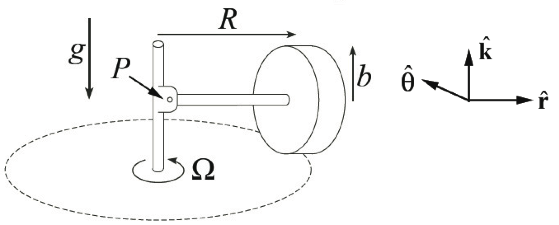I found the following in an exercise of gyroscopes:
In a grain mill, grain is ground by a massive wheel that rolls without slipping in a circle on a flat horizontal surface driven by a vertical shaft. The rolling wheel is constrained to roll in a horizontal circle about the vertical axis. Because of the stone's angular momentum, the contact force with the surface can be considerably greater than the weight of the wheel. In this problem, the angular speed about the shaft is such that the contact force between the ground and the wheel is equal to twice the weight.
How is the angular momentum working so that the force of the wheel on the floor is magnified, to be twice the weight of the wheel?
--
A way that I have thought of it is that the angular momentum is in the $ -\hat{r} $ direction and to move the wheel in the way described in the image a torque is required in the $ -\hat{\theta} $ direction. Looking at the forces in play on the wheel, this can only be provided by the normal force being greater than the weight.
But, wouldn't that mean that the wheel would experience a very unlikely, intuitively speaking, acceleration vertically upwards?
Also, this would mean that the wheel moves in a sort of precessional motion, which leaves me wondering if there's a static friction force acting on the point of contact?


